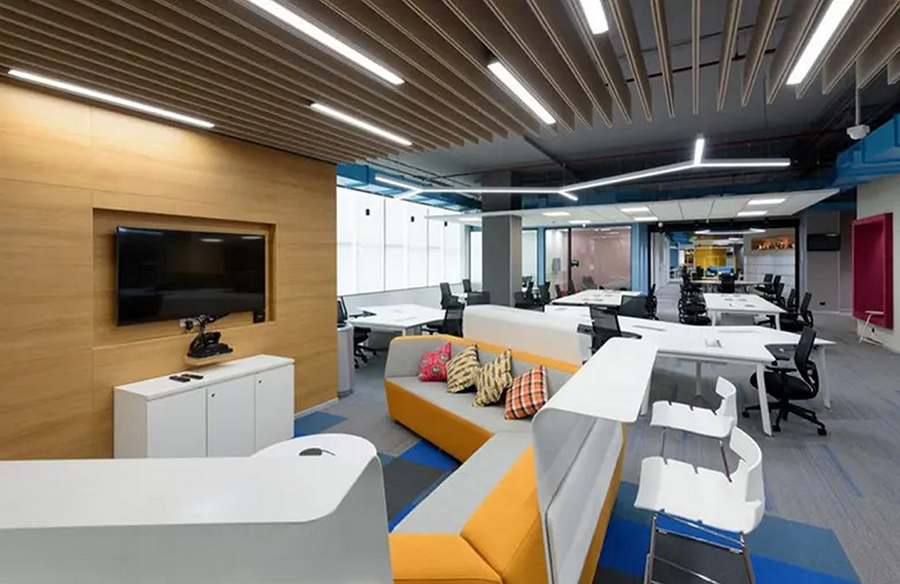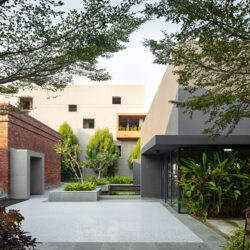Factors Shaping Productivity
In the realm of workplace dynamics, where individuals spend a significant portion of their lives, the quality of lighting emerges as a pivotal element influencing productivity and overall well-being. Surveys and studies reveal that the average person invests more than one-third of their lifetime at work, making it imperative to optimize the work environment. Quality office lighting contributes to the creation of a conducive ecosystem, fostering focus, creativity, and employee health. This article explores the essential factors to consider when choosing the right office ceiling lights to elevate workplace efficiency.
Impact on Circadian Rhythm
The human circadian rhythm, tied to the natural cycle of day and night, is intricately linked to lighting conditions. The intensity and color temperature of light influence awareness, lethargy levels, and overall energy. Pleasing and luminous fixtures contribute to a positive mood, stimulating daily tasks, while inadequate or dull lighting can create a gloomy atmosphere, hampering productivity. Prioritizing high-quality lighting is vital to optimize productivity by aligning with the body’s natural rhythms.
Health and Wellness Considerations
Beyond productivity, the impact of lighting on employee health is a critical consideration. Insufficient lighting, especially in areas with prolonged occupancy, can lead to various health issues, including eye strain, headaches, migraines, and mental health concerns. Well-lit workspaces, complemented by appropriate lighting, contribute to emotional well-being, physical comfort, and even mild reductions in depression levels among employees.
Factors Influencing Lighting Choices
To avoid poor lighting in workspaces, several factors need careful consideration when choosing ceiling lights. These factors are tailored to the unique requirements of different settings such as commercial spaces, shops, and offices.
Office Space and Height:
Evaluate the extent of natural light in the office space. For limited natural light, choose luminaires that evenly illuminate the entire room. Consider the height of the workspace, ensuring a balance between brightness and proximity to work areas.
Brightness:
The intensity of light directly impacts mood and eye comfort. Striking a balance is crucial; dim lighting can dampen mood and strain the eyes, while overly bright settings may cause glare, leading to visual discomfort.
Colour and Temperature:
Opt for neutral and cool-colored lights for office spaces. Blue light enhances wakefulness and productivity, while warm tones induce relaxation. The right color temperature contributes to the desired work atmosphere.
Desk Placements to Avoid Glare:
Carefully position ceiling lights to prevent eye strain and computer screen glare. Thoughtful placement ensures a well-lit workspace without causing visual discomfort.
Lighting Technology:
Consider the choice between incandescent, fluorescent, and LED lights. LED lights, though initially pricier, offer brightness, energy efficiency, and durability, making them a cost-effective long-term solution.
Controls:
Opt for lights with adjustable brightness and color settings. Empowering employees to customize their lighting environment enhances individual comfort and promotes effective work.
Aesthetics:
Harmonize lighting fixtures with the overall workspace design. Contemporary designs offer diverse options, allowing office managers to choose fixtures that complement the architectural aesthetics.
Types of Ceiling Lights for Different Spaces
Understanding the diverse types of ceiling lights enhances the selection process for various office spaces. Each type caters to specific needs and contributes to the overall ambiance:
Recessed Fixtures or Downlighters: Ideal for conference rooms and collaborative spaces, these fixtures provide uninterrupted, bright light and seamlessly integrate with any ceiling type.
Suspended Lights: Visually appealing, these lights add depth to large spaces with tall ceilings. Modern LED panels suspended from the ceiling enhance aesthetics.
Cove Lights: Hidden light sources within false ceilings, cove lights, while challenging to install, offer energy efficiency and elevate aesthetic appeal.
Flush-Mount Ceiling Lights: Directly installed into the ceiling, these lights present a connected appearance and are less prone to dust, simplifying cleaning processes.
Semi Flush-Mount Ceiling Lights: Featuring a visible stem attached to the ceiling, these lights offer enhanced ambience and design value, making them suitable for reception and conference rooms.
Conclusion: Illuminating Excellence
The choice of appropriate ceiling lights for an office is a strategic decision. Factors such as lighting type, energy efficiency, color temperature, and design collectively contribute to creating a well-lit environment that enhances productivity, comfort, and employee well-being. Staying abreast of the latest lighting trends and innovations is imperative for office managers and decision-makers to ensure that their office spaces remain conducive to sustained productivity and creativity.



















